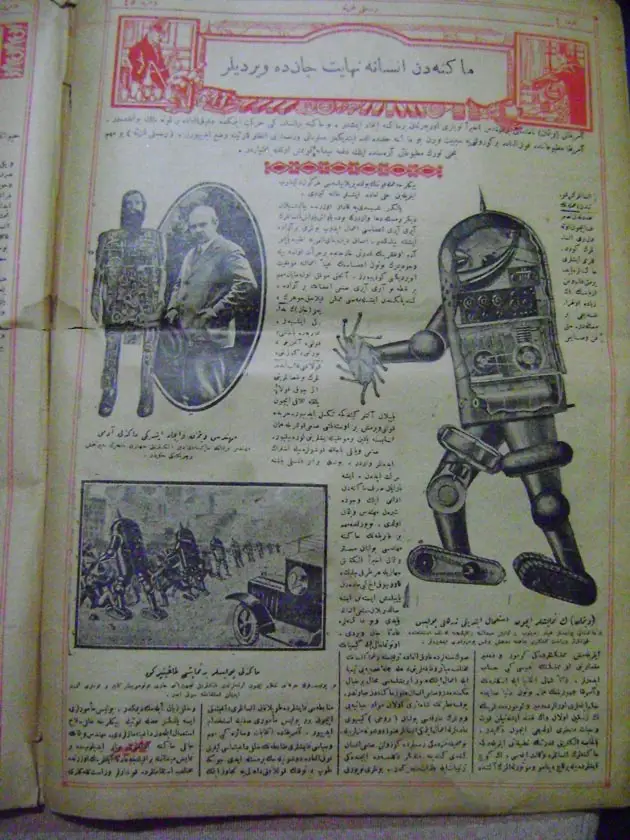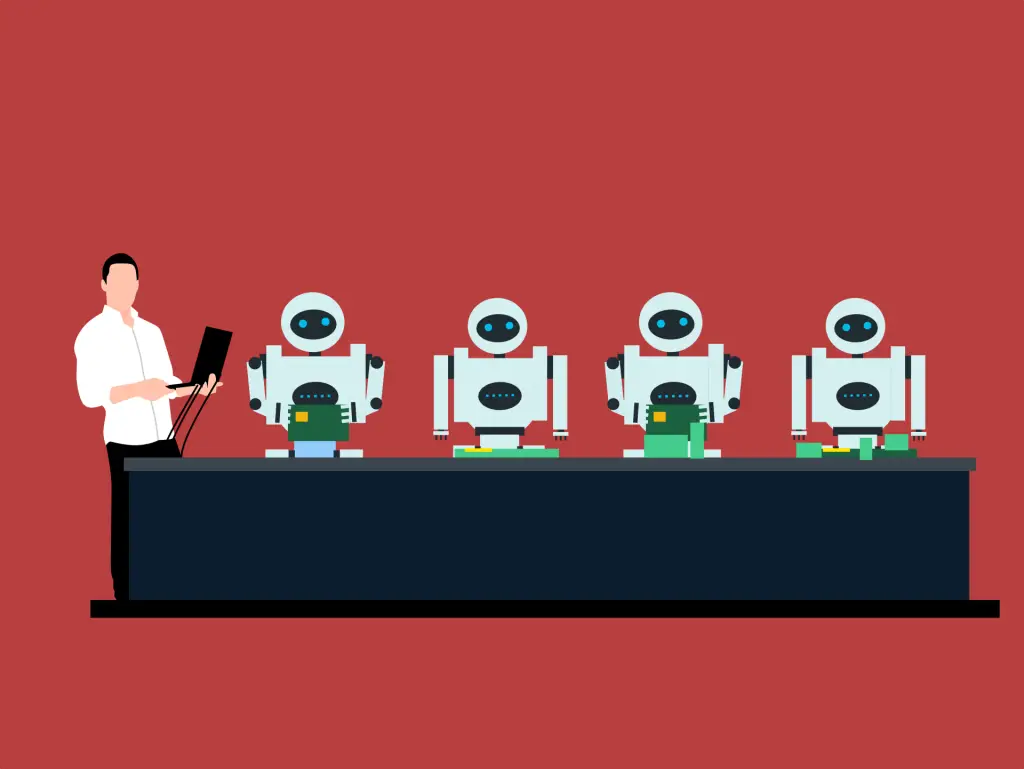 dolph Whitman was a visionary in the field of artificial intelligence and robotics, pushing boundaries with his revolutionary invention, Occultus. This 1909 A.I. robot was one of the first of its kind to understand and interact with humans, setting the stage for further innovations within the field over the course of the twentieth century. In this article, we will explore Occultus’s features and capabilities, its impact on modern A.I., reinterpretations of Occultus today and what lies ahead for A.I. robotics technology in our current era. Share this article to learn more about Adolph Whitman’s incredible legacy!
dolph Whitman was a visionary in the field of artificial intelligence and robotics, pushing boundaries with his revolutionary invention, Occultus. This 1909 A.I. robot was one of the first of its kind to understand and interact with humans, setting the stage for further innovations within the field over the course of the twentieth century. In this article, we will explore Occultus’s features and capabilities, its impact on modern A.I., reinterpretations of Occultus today and what lies ahead for A.I. robotics technology in our current era. Share this article to learn more about Adolph Whitman’s incredible legacy!
Overview of Adolph Whitman and His Invention of Occultus
Adolph Whitman was a renowned scientist, researcher, and inventor during the early 20th century. His most famous invention was Occultus, a groundbreaking robot developed in 1909 that revolutionized the field of A.I. robotics. This revolutionary robot was the first of its kind to understand human language and interact with its environment. It could move on its own, respond to commands, and had the ability to interact with humans in an intelligible way.
At the time of its creation, Occultus attracted widespread attention from scientists and inventors alike for its unparalleled capabilities compared to other robots of its era. In addition to being a technological marvel, it also served as an important influence on modern A.I., inspiring others to pursue further innovation and progress in the field.
Whitman’s creation also highlighted new ethical considerations raised by A.I., as it demonstrated how far robots could be programmed without infringing upon human rights or autonomy. This has been an important issue for researchers ever since, as technology advances at an unprecedented rate and robots become increasingly intelligent and capable.
In conclusion, Adolph Whitman’s revolutionary invention of Occultus remains an important milestone in the history of A.I., both for its technical prowess at a time when robotics technology was still relatively nascent, as well as for the ethical considerations it raised which have continued to shape research into modern A.I..
How Occultus Worked – Features and Capabilities

In 1909, Adolph Whitman created Occultus, a revolutionary A.I. robot that could interact with its environment and understand human language. This remarkable invention has served as an important milestone in the history of A.I., both for its technical prowess and its influence on ethical considerations. In this section, we will explore the features and capabilities of Occultus that allowed it to revolutionize the field of robotics technology.
First and foremost, Occultus was equipped with a range of sensors and motors that enabled it to navigate its environment with ease. It had two cameras installed in its body, which allowed it to detect objects around it as well as recognize faces. Additionally, it had four infrared proximity sensors located in each corner of its body which prevented it from colliding with other objects or people when navigating around tight spaces.
Occultus also featured an artificial intelligence engine that enabled it to process speech and make decisions based on what was said. This allowed Occultus to respond appropriately to voice commands from humans, as well as recognize simple gestures like waving or pointing at something specific.
Safety was also an important consideration for Adolph Whitman when designing Occultus – he included several safety features such as proximity sensors that would detect if something or someone came too close to the robot and automatically shut off all motors until the threat was gone. Moreover, these sensors also helped Occultus learn simple tasks through trial and error such as stacking blocks in order to complete a task efficiently without any risk of injury or damage caused by collisions with other objects or people nearby.
The range of features incorporated into Occultus made it one of the most advanced robots ever built at the time – a true feat of engineering that paved the way for modern A.I robotics technology today!
The Impact of Occultus on the A.I. Field
The invention of Occultus in 1909 was a pivotal moment for the A.I. field, with its remarkable ability to interpret and respond to commands ushering in an age of unparalleled progress. This breakthrough spurred inventors and businesses alike to refine their design and technology, resulting in robots equipped with advanced sensors, motors and AI engines that could reliably complete complex tasks autonomously or understand human speech patterns.
As such, Occultus has had a lasting impact on the development of modern A.I., inspiring further research into this ever-expanding field for many years afterward. As well as providing us with powerful new technologies, however, it also raised some ethical questions about how far we should go when creating machines with human-like abilities – conversations that are still ongoing today.
In conclusion, Occultus is an important milestone in the history of A.I robotics continues to shape our understanding of this technology both now and into the future. Not only has it set a standard for others to follow but it has also given us an opportunity to contemplate some difficult ethical questions around automation – something which Adolph Whitman’s pioneering invention all those years ago started us off on doing.
Contemporary Reinterpretations of Occultus

Contemporary Reinterpretations of Occultus Since its invention in 1909, Occultus has served as an important influence on the development of modern A.I. robotics. Its advanced sensors and motors allowed it to interact with its environment, while its artificial intelligence engine could process speech and recognize the human language. This technological feat set a precedent for future robots, inspiring inventors to pursue further innovation and progress in the field.
Today, this progress is evident in the range of modern A.I. robotics that have been created since Occultus’s invention. These robots come equipped with even more advanced sensors and motors than those used by Occultus, as well as better AI that can understand more complex tasks and instructions from humans. They also often contain safety features that are even more robust than those found in Occultus’s design, allowing them to operate safely in highly complex environments without putting humans at risk of injury or damage.
Occultus-inspired robots are now being used across various industries, including manufacturing, healthcare and customer service sectors. For example, robotic arms are being utilized for repetitive production tasks on factory floors; medical robots are being deployed for surgical operations; and customer service bots are providing automated support services online or through chatbots. In all these cases, these machines can help improve efficiency while freeing up human workers to focus on higher-value activities such as problem-solving or customer relationships management (CRM).
These applications of A.I.-equipped robots have raised important ethical considerations regarding the capabilities of such machines—questions that Adolph Whitman first confronted when he introduced Occultus over a century ago. While advancements in machine learning algorithms have enabled these new types of robots to become smarter over time and learn from their own experiences—without any input from humans—there is still much debate about where to draw the line between automation and human decision-making when it comes to complex tasks involving ethical considerations or moral judgment calls.
Occultus remains an important milestone in the history of A.I., both for its technical prowess and its influence on ethical considerations surrounding robotics technology today—a legacy that will continue into future generations as technology progresses ever further into our lives
The Future of A.I. Robotics in the 21st Century

A century ago, Adolph Whitman’s invention of Occultus served as a milestone in the history of Artificial Intelligence (AI), inspiring generations of inventors to continue to make progress in robotics technology. Now in the 21st century, advances in AI-driven robots have enabled them to become increasingly autonomous and capable of performing complex tasks without requiring human assistance. This development has revolutionized various industries and sectors, from healthcare to energy production, by automating labor-intensive processes that would traditionally be done by humans.
However, with increased automation comes an influx of ethical concerns. Primarily there is the fear that robots may take over human jobs; hence policymakers should carefully consider the benefits and risks that this brings about for society at large. But there is also potential for collaboration between A.I.-powered robots and humans – for example, a robot might help its counterpart with a task more quickly or accurately than they could do alone – thus providing additional value without sacrificing existing jobs due to automation.
In conclusion, while increased automation through A.I.-driven robots presents us with opportunities for economic growth and efficiency improvements, it is important to remember the ethical considerations posed by such developments while navigating our way into the future. Thus careful consideration must be taken when developing policies that assess both their benefits and potential risks on society at large.
Avid Writer with invaluable knowledge of Humanity!
Upcoming historian with over 30 million views online.
“You make your own life.”





